All too often, charities do not clearly define their financial objectives for the year and for future years. Yet this exercise is essential, not only to validate the feasibility of your operational strategy, but also to guide the development of your fundraising strategy.
This article will give you an overview of the essential elements to consider when defining your financial objective.

1- Define your provisional annual budget
The aim is to determine the cost of priority needs (activities / programmes and running costs), which ultimately determine your organization’s financial target for one or more years.
Once you have defined and prioritized your ambitions, ideally in an operational strategy, it is essential to translate these ideas into figures. If you don’t have an operational strategy, take stock of your activities and programmes, your needs (equipment, HR, etc.) and estimate how much it would cost to achieve your objectives.
Then total up each line, which will give you the budget for the year. You can also make estimates based on what is:
- essential, to keep your organization running at a minimum;
- ideal, to develop your organization and achieve a minimum of your objectives;
- or a dream, to take your organization to the next level and meet or exceed all your objectives.
2- Take the time to assess your administrative and operating costs
When it comes to assessing your annual budget, pay particular attention to your administrative costs! This is the time to take the time to understand how your organization operates.
Organizations need to understand their costs to ensure they are efficient. Indeed, thinking about cost recovery allows for:
- Sustainability – a fair price is paid for every service or activity.
- Confidence in funders’ conversations – being able to negotiate with confidence and be transparent about costs makes it easier for charities to justify costs to funders and users.
- Efficiency – organizations that know their cost base are more effective and can challenge how they spend their funds in the best way possible.
- a solid infrastructure – having effective overheads funding allows you to put in place a solid infrastructure so that you can work at scale and do it with real quality.
3- Understand the different types of cost
At this stage, and also when preparing the various budgets for your projects, it is important to distinguish between three main types of cost:
- Direct costs
Every organization has front-line costs that enable it to carry out its work. These are the direct costs of the service or activity.
Examples: travel costs, salaries of staff directly involved in implementing the project, etc.
- Direct support costs
Other costs can be identified as direct costs and directly linked to the activity or service, but are shared between different activities or services. We therefore need to do some allocation work to calculate them, by dividing the costs between the different activities or departments.
Examples: training, building costs and telecommunications, which are costs that are sometimes shared between operational, fundraising and administrative functions.
- Indirect costs
Indirect costs, such as IT, CEO time or financial costs, cannot be directly linked to activities or services. However, eliminating any of these costs would seriously undermine the quality of the work and the viability of the organization. This is why they must be included in the budget when the real cost is considered.
Examples: governance, IT and finance.
4- Define your financial objective
Your financial objective may be equivalent to your annual/multi-year budget. However, to refine your financial objective even further and get a head start on your fundraising strategy, create a table with each of your programmatic priorities, a line for operating costs, and note for each year the amounts already raised or secured and the amounts still to be raised.
Each line will give you the total cost of each of your programme priorities, each column the cost per year, and your annual financial target. The total amount will allow you to look ahead 3 to 5 years, depending on the number of years chosen for this exercise, and to know your long-term financial needs, while having a clear overview of the funds already secured and the funds that still need to be raised.
5- Strategic questions to ask yourself
Throughout this exercise, there are a number of key questions to ask yourself:
- Funding to develop your business: What do you need to achieve in terms of funding to develop your business? And how quickly do you need to raise these funds?
- Resources available today: How much time/money/human resources can you invest in developing your organization?
- Your development capacity: Do you have the capacity to receive more funds (human resources, accounting, reporting, monitoring, etc.)?
All in all, it’s important to remain realistic. Your financial target should then guide your fundraising strategy and actions, while taking into account your internal resources and capacity to absorb funds. It’s always better to grow slowly, but surely!
Do you need expertise and support for your organization? Let’s talk about it!
To keep up to date with the latest articles, follow me on LinkedIn and subscribe to the newsletter.
Copyright © 2023 E | C Consulting – All Rights Reserved – To use this content, please ask for permission in advance and cite the source if agreed.
